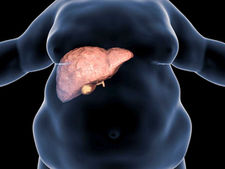
Knee arthroplasty
If your knee is severely damaged due to arthritis or injury, it may be difficult to perform simple activities such as walking or climbing stairs. Pain may be felt while sitting or standing.
When nonsurgical treatments such as medications, physiotherapy, and steroid/hyaluronic acid injections do not reduce pain or no longer help, total knee replacement surgery may be considered. Knee replacement surgery (arthroplasty) is a safe and effective procedure to relieve pain, correct leg deformity, and help resume normal activities. Total knee replacements have been performed successfully at all ages. Although most patients who undergo total knee replacement are between the ages of 50 and 80, recommendations for surgery are based on the patient's pain and disability, not their age. When determining whether a knee replacement is right for you, an orthopedic surgeon evaluates your knee's range of motion, stability, and strength.
X-rays help determine the extent of damage. You may be offered knee replacement surgery if: You have severe pain, swelling and stiffness in the knee joint and reduced mobility It is difficult to walk more than a few blocks without significant pain or you need to use a cane or walker The severity of your knee pain affects your quality of daily life and sleep You can go shopping or go to the bathroom Daily tasks, such as going out, are difficult or impossible.
If you have a knee deformity If you feel depressed due to pain and lack of movement If working or social life becomes difficult BEFORE THE PROCEDURE You should stay as active as possible.
Strengthening the muscles around the knee will aid recovery. If possible, light exercises such as walking and swimming should be continued in the weeks and months before surgery. The patient may be referred to a physiotherapist who will provide helpful exercises. Knee replacement surgery requires anesthesia. The patient's admission status and preference help the team decide whether to use general anesthesia, which leaves you unconscious, or spinal anesthesia, which leaves you awake but without pain below the waist. The patient is given intravenous antibiotics before, during, and after the procedure to help prevent postoperative infection. You may also be given a nerve block around the knee to numb it. After the procedure, the effect of numbness gradually disappears. How does the process proceed after the procedure? You will be encouraged to move the foot and ankle, which increases blood flow to the leg muscles and helps prevent swelling and blood clots. Blood thinners are taken and a support hose or compression bandage/stocking may be worn to provide further protection against swelling and clots. You will be asked to do frequent breathing exercises and gradually increase the activity level. A walker or crutches will need to be used at first, and a physical therapist will teach the patient exercises to help with strength. It may usually require a few days of hospitalization, but recovery times may vary.
Most people can stop using walking aids about 6 weeks after surgery and start driving after 8 to 10 weeks. After discharge, the patient receives advice on caring for the knee at home. A physical therapist will show you how to exercise the new knee. After leaving the hospital, physical therapy should be continued at home or in a center. Your exercises should be performed regularly as instructed, and all instructions from your care team regarding wound care, diet, and exercise should be followed for best recovery. Realistic Expectations An important factor in deciding whether to have total knee replacement surgery is understanding what the procedure can and cannot do. Most people who undergo total knee replacement surgery experience a significant reduction in knee pain and a significant improvement in the ability to perform common daily living activities. With normal use and activity, every knee prosthesis begins to wear away from the plastic spacer. Excessive activity or weight can accelerate this wear and cause the knee replacement to become loose and painful. For this reason, most surgeons advise against high-impact activities such as jogging, jogging, jumping, or other high-impact sports for the rest of your life after surgery. Realistic activities performed following total knee replacement include unrestricted walking, swimming, golfing, driving, jogging, cycling, ballroom dancing and other low-impact sports. With appropriate activity modification, knee prostheses can last for many years. Possible Complications of Surgery Knee replacement surgery is a common operation and most people do not experience complications. However, as with every operation, it has risks as well as benefits. Complications are rare, but may include: Knee stiffness Infection of the wound Infection of the joint replacement requiring further surgery Unexpected bleeding in the knee joint Damage to ligaments, arteries, or nerves in the area around the knee joint Deep vein thrombosis / deep vein clot (DVT) Persistent pain in the knee During surgery or subsequent fracture in the bone around the knee replacement. In some cases, the new knee joint may not be completely stable and further surgery may be needed to fix it.
FOR INFORMATION AND APPOINTMENT, YOU CAN LEAVE YOUR NUMBER OR ASK OUR EXPERTS
YOU CAN LEAVE YOUR NUMBER FOR INFORMATION AND APPOINTMENT AND ASK QUESTIONS TO OUR EXPERTS



-04.png)
-06.png)
-05.png)
-08.png)
-07.png)























